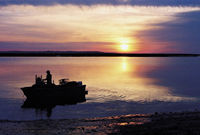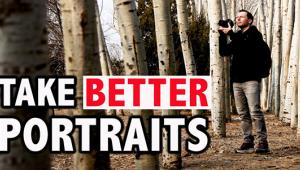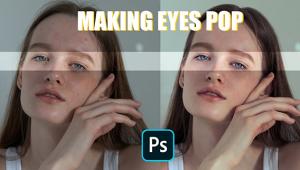Some working places can be great materials for photographic scenes. - Marla Ahlgrimm
Point & Shoot: Photographing People at Work
|
As with an environmental portrait, you can capture revealing images of people by photographing them at work. The idea is to not only portray the individual, but to show what a person does with his/her life. Most occupations have distinctive tools, clothing, or settings that can be interesting to photograph. Some people who would look very ordinary against a simple backdrop are much more intriguing when they're depicted in a more revealing setting.
When you want to photograph someone working, scout around first. The best way to do this is by visiting the subject at work. Ask whether you can hang around for a while and watch what he/she does. Observe what will make a good photo. You might ask what your subject is especially proud of, such as a special award or achievement. Oftentimes, people will want to dress up for a portrait, but in this case, it's important that they wear their regular work attire for a natural-looking work photo. People are often more comfortable in familiar surroundings, which makes it easier to get relaxed, natural poses. And of course, people doing their work gives them something to do in your pictures. But if you include the workplace in the picture, make sure that it helps to create a visual statement about the person's occupation. For example, a high camera angle can be used to show the person's papers on his/her desk, in addition to being a portrait of the office worker. Frame your scene carefully and eliminate unnecessary, distracting elements. Avoid clutter by rearranging the scene a little. With your subject's permission, feel free to move an offending wastebasket, soft-drink can or ashtray out of the picture. You can utilize the wide-angle setting on your compact camera's built-in lens to take in your subject and the work environment. But when you use a wide-angle setting, keep distortion to a minimum by keeping the camera relatively parallel with the subject, without tilting it up or down. In most work portraits, the person is only one element in the frame. However, if your subject wears a uniform with a hat or helmet—such as a fireman or another type of emergency worker—you can shoot a tighter portrait that still reveals much about the job that he/she does. For this, you'll want to use your lens's telephoto setting, or get closer to your subject. (Potentially hazardous places, such as construction sites, also call for a longer lens to keep a safe distance.) The jobs of people who work with their hands can provide some colorful environments and interesting possibilities. Generally, it's easier to photograph people working outdoors. Just avoid the harsh sunlight of midday whenever possible. Shoot early or late in the day, or in open shade; this will help free you to concentrate on finding the best compositions and camera angles. Indoors, you'll encounter many lighting problems such as low light, or fluorescent illumination which will give your subjects a greenish cast. If the artificial light source is mixed with natural light coming in from windows, your best bet is to use a combination of flash and natural light coming in from windows or doors. Use a flash-fill setting for subtle results. You don't want flash to be too obvious and overpowering—move your subject away from walls to avoid harsh shadows created by on-camera flash. And don't be afraid to experiment with natural light indoors. Window light alone can provide very flattering illumination for people. You can shoot some great candids of people working, such as an open-air market or fair. Shoot lots of pictures, ranging from showing how vast the market is, in addition to portraits of some of the vendors. If people notice you, smile and be friendly. If you're concentrating on photographing an individual or group, tell them what you're doing. Don't be too sneaky when shooting candids. Most of the time, people won't mind being photographed if you're subtle and act quickly. |
- Log in or register to post comments























































